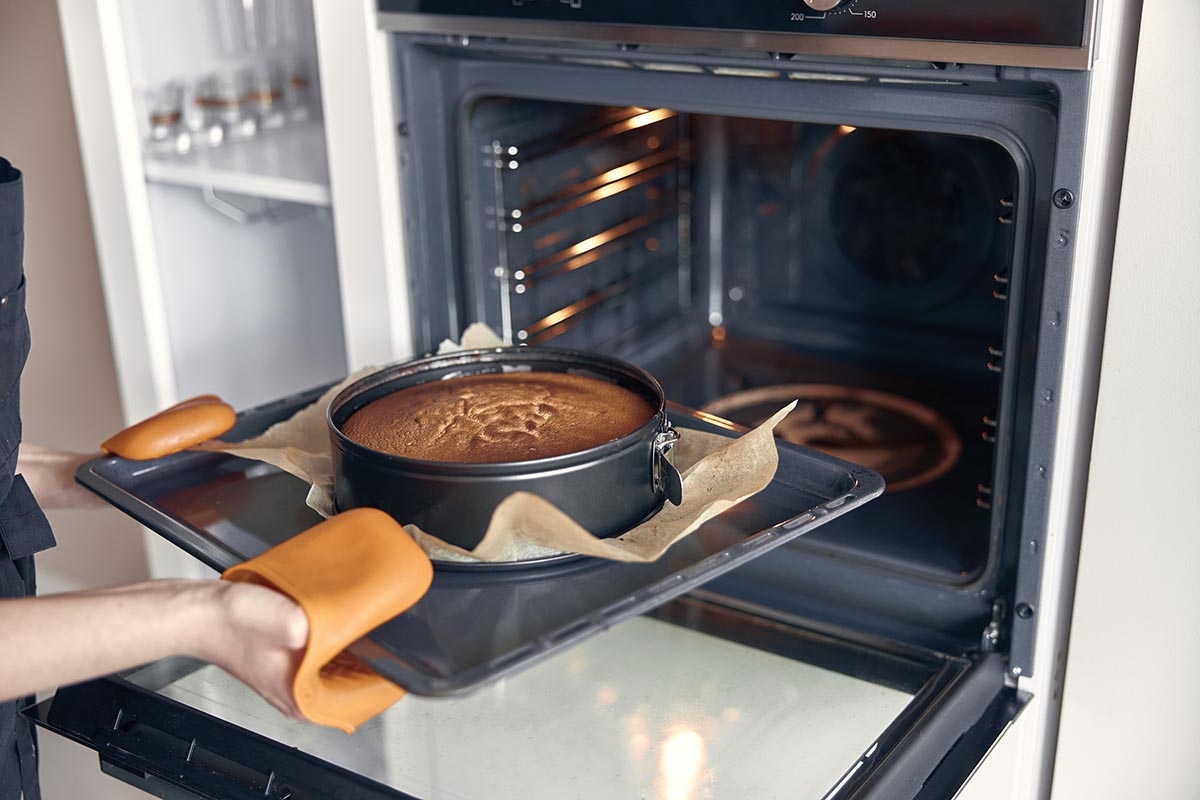One of Roger Grannis’ most poignant childhood memories is of an encounter his mother had with a woman outside a grocery store. The woman appeared to be destitute, and rather than pass by her, like many other people were doing, Grannis’ mother stopped to speak with her. The woman’s husband had recently died, she had lost almost everything, and she was teetering on the brink of homelessness. Grannis’ mother asked her to share some pleasant memories, and the woman talked about her husband’s favorite dessert, a yellow cake made from an old family recipe. Grannis’ mom brought the woman into the store, where she purchased ingredients for the cake, and invited the woman to her house so they could bake it together. The next day, Grannis’ father drove the woman to the bus station so she could be reunited with her son, who lived in another state.
Looking back on that episode years later, Grannis realized that, in addition to be being a touching tale of human compassion, the story incorporated the three essential elements of a good sales process. Though she wasn’t trying to sell anything, Grannis’ mother gave a master class in how to form a relationship with someone by:
- Making a true connection
- Understanding the other person
- Presenting an opportunity based on what she’d learned
And so, when Grannis, a nationally recognized speaker and sales communications expert, was pondering a name for his sales training program, “The Yellow Cake Principle” emerged as an obvious choice.

In his process, Grannis lays out a simple recipe for sales based on genuine connection and sincere dialog that leads to better results for both parties. The fundamental ingredients in this recipe fit neatly into a CUP: connect, understand, present.
CONNECT
Make a true connection with your client. Find something you have in common and interact on a personal level. What you want your client to feel, says Grannis, is “This person is just like me. We have common interests and concerns. We think alike on some things.”
“Forming a connection is really all about having a conversation and showing interest,” says Grannis. In a sales context this process can sometimes get squeezed, so he recommends icebreakers to help build bonds quicker:
- Pay the person a genuine compliment. This isn’t empty flattery. Be sincere and insightful.
- Use their name two or three times throughout your conversation.
- Talk about something you have in common.
- State a problem and how you’d resolve it. Photographers can do this by pointing out common issues clients may have had with other photographers, then explaining how you’d approach the situation differently.
- Offer something of value. This is where you tease your value proposition by offering something the client will find useful, such as a small gift or a leave-behind that provides professional guidance to help the client think through the photo shoot and prepare for a top-notch experience.

UNDERSTAND
To be successful at sales, you need to understand your client’s vision, tastes, and communication style. During this stage, you’re determining what’s important to your client so you can propose something customized for their needs.
Ask questions. Casual chitchat fits under the connect part of the process, which is all about establishing rapport. To understand, you need to go deeper. This is where you make clients feel heard and where you gather valuable information about how best to serve them. This is also where you can help clients enter a dream state in which they imagine the eventual photography experience and how it will make them feel.
Grannis recommends starting this stage with what he calls a “conversational header” so clients understand you’re shifting from casual, introductory talk to more detailed questions about the project. For example, “I really want to make sure we’re a good match, and to serve you better, I’d like to ask a few questions about your vision for the photography session. Is that OK?”
Next, Grannis suggests asking specific questions that will help you formulate a clearer picture of what to offer, such as:
- Tell me about your vision for these images.
- When it comes to this portrait experience, what’s important to you?
- If it’s five years from now, how do you want these images to make you feel?
This is also the time to mention a potential solution and ask your client’s impression of that solution. Doing this demonstrates your professional experience and gives you insight into the client’s feelings about your ideas. It also helps you customize your eventual photography package to fit their needs specifically.
“Don’t rush into close-ended questions, such as How many people? What time? What’s your budget?” says Grannis. “Don’t skip that dream state and get into the specifics too quickly.” Instead, bring the client along with you on an imagined journey about their photography, then get into the nitty-gritty when it feels appropriate.
PRESENT
After you’ve connected and understood, it’s time to present an opportunity based on all the information you’ve learned. Express what you’ve heard and relate it back to the client: “What I’ve heard you say is …. Now I’d like to create a customized option for you.” Give yourself a break to think and come up with tailored options that will make it easy for the client to say yes.
“The CUP process makes selling easy, approachable, and reduces fear,” says Grannis. This is particularly important for photographers, who often need to overcome a fear of selling in order to make a living. But when you can operate with a verified plan, it helps guide your interactions and provide a framework for next steps.
Throughout the process, it’s important to understand how your clients are viewing their purchase decision. “People buy with emotion and justify their decisions with logic,” explains Grannis.
Throughout the process, it’s important to understand how your clients are viewing their purchase decision. “People buy with emotion and justify their decisions with logic,” explains Grannis. Sales is about engaging clients’ emotions, taking away their anxieties, and making the entire experience superlative. To do this, the process needs to be built on sincerity and making a true connection. Then follow up.
“One of the keys is building momentum and excitement,” says Grannis. You’re fanning the flames as you’re going. The longer you wait from the time you bring them to the zenith of excitement until you try to close the deal, the more the fire cools down. So, if you can get people to agree at the time of your sales presentation, that’s best. If not, have an established schedule for follow-up so you’re not playing phone tag, emailing, and hoping they’ll respond in a timely fashion. Also, continue your follow-up in the client’s communication style, and keep linking back to the dream, to that thing they were most excited about, so you’re tapping into the excitement you worked so hard to generate.
Always remember that you’re a talented professional; don’t undervalue yourself or what you have to offer. The experience, talent, and professionalism you apply to a project has value. You’re doing your clients a service by providing your expertise and artistry; you’re helping them represent their memories in the best light. Approaching a sale with this mindset is critical because it takes you away from a mindset of landing a sale into a mindset of giving.
“And,” says Grannis, “if you come in with a spirit of giving, providing the right service in a way they want to receive it, everyone wins.”
Jeff Kent is the editor-at-large.



